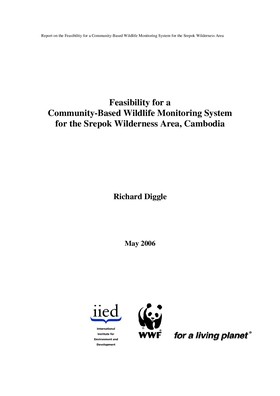Feasibility for a community-based wildlife monitoring system for the Srepok Wilderness Area Project in the Mondulkiri Protected Forest, Cambodia

Srepok Wilderness Area Project Technical Paper Series No.1
The Srepok Wilderness Area (SWA) project involves the Cambodian government, international NGO’s, private sector and rural communities. The project’s primary purpose is to restore the once abundant large mammal populations and involves a number of components to address such factors as: local poverty, lack of local awareness, uncontrolled and rampant over-exploitation, migration of non-resident people, government staff capacity building, lack of monitoring of wildlife, lack of protected area management planning and infrastructure development.
Key components of the project involve monitoring wildlife numbers and law enforcement through ranger patrols. During the first two years the project deployed a combination of field monitoring techniques; infrared-based camera-traps and conventional patrolling. One objective of the project is to involve local communities in monitoring biodiversity, potentially through the establishment of a community-based monitoring system. Current monitoring techniques do not involve local communities directly, although the majority of rangers working for the project are from local communities, and are not government employees. The project is therefore considering using a devolved monitoring process first developed in Southern Africa called MOMS (Management Oriented Monitoring Systems). The process involves field staff and community members in designing a monitoring process and undertaking the data collection, recording and analysing with minimal support from external or senior technicians.
Cite this publication
Available at https://www.iied.org/g02323